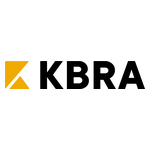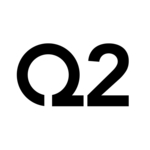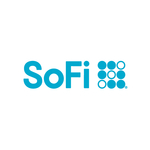Cetera Financial Group use case: ensuring quality amid rapid expansion
As part of the Allied Testing Excellence in Quality blog, we met with Richelle Paulsen, the QA director at Cetera Financial Group, to discuss the role of QA in supporting Cetera’s growth.
Over the past five years, Cetera has grown from approximately 7,000 advisors and 1,300 employees supporting $242 billion of assets under administration (AUA) in 2018 to approximately 12,000 advisors and 2,800 employees supporting more than $521 billion of AUA, as of June 30, 2024. In October 2023, Cetera announced a reinvestment from its main investor – private equity firm Genstar Capital, to expand its business further. “This reinvestment from Genstar affirms Cetera’s proven ability to create value,” said Cetera Holdings’ CEO, Mike Durbin.

Richelle Paulsen, QA director, Cetera Financial Group
Richelle, thank you for finding time for this interview. During the last five years, Cetera made several acquisitions in the wealth management business (Avantax, Securian, Voya, to name a few). At the same time, the firm has been actively developing its IT solutions to improve the experience of its clients. It looks like upgrading a plane in mid-flight while adding more passengers. How do you manage to maintain top-quality standards in such a dynamic environment?
Richelle: We operate in a very challenging environment. I would like to start with the part of the question about the tech upgrade of Cetera platforms.
There are several challenges that we face when shipping our updates to production:
- High competition on the market
- Highly regulated environment
- Specific business domain that requires a deep understanding of the fintech industry
- Complex architecture with multiple integrations, upstream and downstream systems
- A mix of legacy and new systems
- High requirements for the performance and resiliency of applications
- We need to be very efficient
Wow, that’s a huge list! How do you address all these challenges?
You must have several things in place:
1. The members of the product delivery team should have a deep understanding of the fintech industry and regulatory and compliance requirements. There are many industry examples when a lack of this knowledge dramatically reduces the productivity of teams and the quality of applications.
2. The QA team needs a strong technical background, hands-on experience with databases, integrations, APIs, automation and performance tools, and monitoring tools, and an understanding of architecture, dependencies, ETL, and messaging protocols. The team must also be able to review code if needed.
3. High level of automation. In a fintech company, it is quite a challenge to build efficient automation with all these data dependencies and integrations. So, your QA team needs to be creative and use the right automation instruments at the right levels (e.g. unit, integration, E2E etc) to maximise the automation efficiency.
4. “Shift left” philosophy. In our case, it is much broader than just shifting testing to earlier stages. We help business analysts write technical requirements, document architecture and legacy systems, analyze quality risks at the project initiation phase, create production workload models, participate in performance engineering, and help increase unit test coverage. We also helped build a chain of environments that allows us to do a wide variety of testing while keeping UAT and integration environments stable.
You should have quite a strong QA team to fulfill all these requirements. How is it structured? Do you rely on your employees? Do you use vendors?
At Cetera, we use a mix of our staff and third-party resources. Allied Testing has been our main QA partner since 2014. We’ve come a long way together, starting with building QA processes and driving all the “shift left” initiatives I mentioned earlier.
With a strong team and the right methodology, we significantly reduced the time to market for our applications and plan to improve it even more.
Gathering the right team and building all processes must have taken plenty of time. Let’s talk a bit more about the M&A challenges. Cetera has recently made several acquisitions of other wealth management companies, with the subsequent migration of their advisors to its platforms. Every M&A is a complicated story – from the development and the QA perspective, it only starts when the deal is done. Each deal has many hidden technological risks. How do you approach them and ensure successful delivery from a quality perspective?
This is an interesting question. M&A projects, by nature, have their complexities:
- Acquisitions can be unexpected and have very strict deadlines. You know how it happens – due to the confidential nature of such transactions, until the deal is closed, not everyone knows about it. When it is closed, you typically are given a deadline by which the new business should be integrated.
- M&A affects multiple company systems. For every acquisition, you must properly integrate the new business and its clients into your processes.
- M&A consumes resources from all teams. M&A requires involvement from everyone – from sales reps and compliance teams to customer service and technical teams.
- Acquisitions can bring additional risks to the organization. A poorly implemented acquisition can impact a newly-purchased business and its existing users.
So, what is your secret recipe for successfully delivering an M&A project?
This recipe has many ingredients, but if you gather all of them, a positive outcome is inevitable. Here is what you need:
- Vision that the quality and success of the company go hand in hand. Our senior executives have this vision, which drives the organization’s iterative improvement processes.
- Strong subject matter experts in each team. Without people with a deep understanding of your business flows and typical user scenarios, you shouldn’t even think about stepping into these waters.
- Deep understanding of the M&A scope. Before upgrading or integrating any systems, you need to identify the full scope of the project, all dependencies, and potential technical and business risks. If you prepare properly, this will increase your chances of successfully delivering an M&A project.
- Efficient collaboration between teams (PMO, BA, development, QA, security, infrastructure, and others). We invested much time and effort in building strong relationships between all teams. This has always been strongly supported at the Executive level. And now, when we do multiple acquisitions per year, we benefit from this investment.
- Strong project management skills. To successfully deliver an M&A project, you must have very organized and proactive teams. This requires organizational skills and the ability to manage technical initiatives. For example, the QA team helps coordinate data migrations, integration projects, and others.
- People with a deep understanding of architecture, integrations, upstream and downstream systems, and technical dependencies. In our case, the QA team fully meets this need – we have been testing our apps for years and know both business requirements and what’s under the hood of the systems. This knowledge allows them to identify and address risks in advance.
After several acquisitions, we formed a so-called M&A SWAT team. This team consists of the most knowledgeable subject matter experts in each field. Every time a new acquisition comes, they jump on it and start analyzing, planning, assessing risks, forming teams, and doing everything needed for successful delivery. We organize our work in a very efficient way – we can inflate our QA team during acquisitions and release excessive resources when the migration is finished.
It looks you have already gained much acquisition experience and know all the ins and outs of this process. But here is a question, however. You probably didn’t have all this knowledge during your first M&A. How did you develop this methodology?
After each M&A, we analyze the lessons learned and consider how to do it more efficiently next time. More importantly, I have very strong support from the executives to modify the QA team as needed and make adjustments whenever I see any inefficiencies in the processes. This helps us to be very flexible and quickly learn from our previous transactions.
As a result, our organization is getting stronger with every new acquisition. Our processes are improving; our teams collaborate better, we have new integrations with broker-dealers, and our range of services for the clients is growing.
That was very insightful. Thank you! You mentioned using Allied Testing as a QA partner. Can you elaborate more on your requirements for the QA vendor and how you build the relationships that allow you to deliver such complex projects?
Sure. In my career, I have used several vendors, and with time I came to certain principles that allow me to build very productive relationships with a vendor:
- High requirements and focus on the result. I don’t need just a manual testing vendor. I need a proactive vendor that will constantly offer improvements and, more importantly, be capable of delivering them. I need a vendor with professionals capable of wearing multiple hats: programme manager (PM), system analyst, UAT coordinator, technical analyst, data scientist, and developer.
- Full transparency. If I don’t like something about the vendor’s performance level, they will know it. But it works in both directions – if a vendor sees a way to improve our processes and needs my help, I will support it and do my best to achieve it.
- Flexibility. For me, having a certain flexibility from a vendor is very important. This includes free bench resources and the ability to supply strong resources with fintech knowledge quickly. This requirement is very important when you work in a constantly changing environment.
- Clear and proactive communication. When you work with complex projects, any delay in identifying a risk or problem can cost you money, so you’d better have people around you who can clearly articulate all issues.
- Focus on maintaining reasonable attrition. Having people on the team who know how things work is very important. When a group of people with the right skills work together for three to five years (or ten years in our case!), their collaboration significantly improves. They work as a single organism, and everyone can start outperforming.
And the final question for today. Given the current excitement around artificial intelligence, has your team begun experimenting with AI technologies?
Yes, we already have several working groups analyzing how AI can improve the productivity of the SDLC and the QA team. The results of this analysis look very promising. Still, given that we operate in a very regulated environment, we collaborate with legal, security, infrastructure, and other teams to assess all solutions.
Richelle, thank you for this very insightful interview. Wishing you and Cetera all the best with future acquisitions and further business growth!
Cetera Financial Group refers to the network of independent retail firms encompassing, among others, Cetera Advisors LLC, Cetera Advisor Networks LLC, Cetera Investment Services LLC (marketed as Cetera Financial Institutions or Cetera Investors), and Cetera Financial Specialists LLC. All firms are members FINRA/SIPC. Cetera Financial Group is located at 655 W. Broadway, 11th Floor, San Diego, CA 92101.
 Sponsored by Allied Testing, a leading QA and testing specialist firm with the main focus on the capital markets, trading and finance industry.
Sponsored by Allied Testing, a leading QA and testing specialist firm with the main focus on the capital markets, trading and finance industry.
Over the years since our founding in 2000, Allied Testing has earned a reputation of premiere application quality management specialists.
Allied Testing works with CIOs, VPs of development and quality directors to improve stability and resilience of their systems, develop or fine-tune QA and sourcing strategies, and take on non-trivial testing tasks, while driving down costs.










































